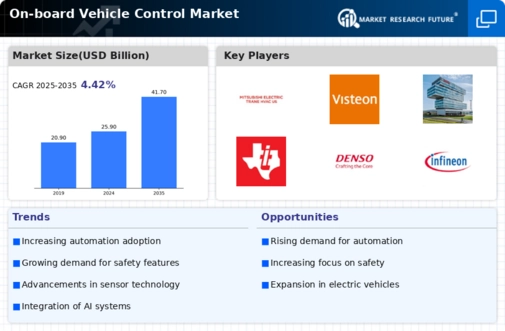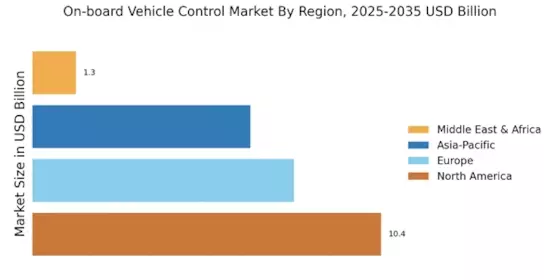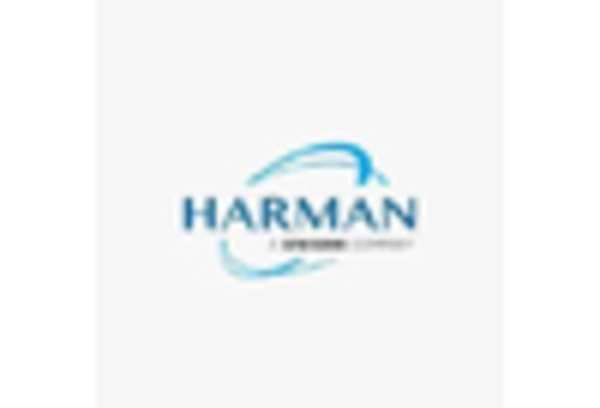On Board Vehicle Control Market Summary
As per MRFR analysis, the On-board Vehicle Control Market Size was estimated at 25.91 USD Billion in 2024. The On-board Vehicle Control industry is projected to grow from 27.06 USD Billion in 2025 to 41.7 USD Billion by 2035, exhibiting a compound annual growth rate (CAGR) of 4.42 during the forecast period 2025 - 2035.
Key Market Trends & Highlights
The On-board Vehicle Control Market is poised for substantial growth driven by technological advancements and evolving consumer preferences.
- The integration of advanced technologies is transforming the On-board Vehicle Control Market, particularly in North America, which remains the largest market.
- Sustainability is becoming a focal point, with electric vehicles in the Asia-Pacific region leading the charge in market growth.
- The demand for enhanced safety features is driving the expansion of Advanced Driver Assistance Systems (ADAS), which is the largest segment in the market.
- Regulatory developments and the rise of autonomous vehicles are key drivers influencing the market dynamics, particularly in passenger vehicles.
Market Size & Forecast
| 2024 Market Size | 25.91 (USD Billion) |
| 2035 Market Size | 41.7 (USD Billion) |
| CAGR (2025 - 2035) | 4.42% |
Major Players
Bosch (DE), Denso (JP), Continental (DE), Aptiv (IE), NVIDIA (US), Harman (US), ZF Friedrichshafen (DE), Magna International (CA), Valeo (FR)


















Leave a Comment